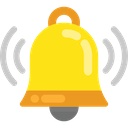Bruce_B
Jedi Warrior
Offline
Well I just bolted down the crankshaft in my 1275 block and it rotates smoothly--a good thing.
Now to measure end-float, I have standard thrust-washers. The instructions say to 'lever' the crankshaft to one end and measure the difference by the thrust washer.
I' tried moving the crank with a large screwdriver between the
block (Front of engine) and the crank web. Nothing much seems to move, and I can't measure any float with feeler gauges.
So:
(1) Do I need to move push harder to get the crank to move?
(2) Since everything rotates smoothly can I assume I have adequate end-float? (probably not a good idea.
(3) What if I have zero end-float?
Thanks....
Now to measure end-float, I have standard thrust-washers. The instructions say to 'lever' the crankshaft to one end and measure the difference by the thrust washer.
I' tried moving the crank with a large screwdriver between the
block (Front of engine) and the crank web. Nothing much seems to move, and I can't measure any float with feeler gauges.
So:
(1) Do I need to move push harder to get the crank to move?
(2) Since everything rotates smoothly can I assume I have adequate end-float? (probably not a good idea.
(3) What if I have zero end-float?
Thanks....

 Hi Guest!
Hi Guest!
 smilie in place of the real @
smilie in place of the real @
 Pretty Please - add it to our Events forum(s) and add to the calendar! >>
Pretty Please - add it to our Events forum(s) and add to the calendar! >> 
